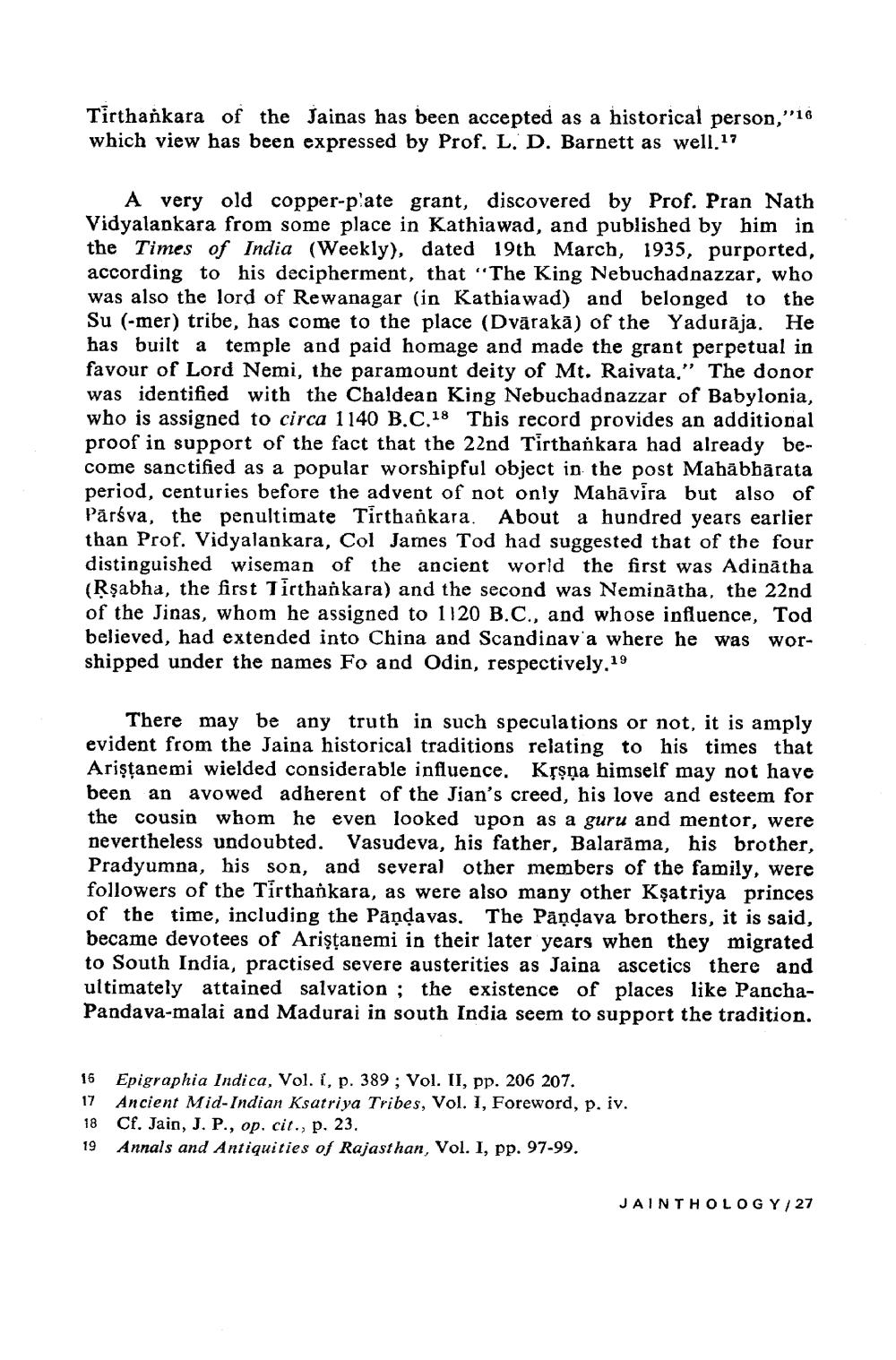________________
Tirthankara of the Jainas has been accepted as a historical person,"16 which view has been expressed by Prof. L. D. Barnett as well.17
A very old copper-plate grant, discovered by Prof. Pran Nath Vidyalankara from some place in Kathiawad, and published by him in the Times of India (Weekly), dated 19th March, 1935, purported, according to his decipherment, that “The King Nebuchadnazzar, who was also the lord of Rewanagar (in Katbiawad) and belonged to the Su (-mer) tribe, has come to the place (Dvārakā) of the Yadurăja. He has built a temple and paid homage and made the grant perpetual in favour of Lord Nemi, the paramount deity of Mt. Raivata." The donor was identified with the Chaldean King Nebuchadnazzar of Babylonia, who is assigned to circa 1140 B.C.18 This record provides an additional proof in support of the fact that the 22nd Tirthankara had already become sanctified as a popular worshipful object in the post Mahābhārata period, centuries before the advent of not only Mahāvira but also of Pārsva, the penultimate Tirthankara. About a hundred years earlier than Prof. Vidyalankara, Col James Tod had suggested that of the four distinguished wiseman of the ancient world the first was Adinātha (Rşabha, the first Tirthankara) and the second was Neminátha, the 22nd of the Jinas, whom he assigned to 1120 B.C., and whose influence, Tod believed, had extended into China and Scandinav'a where he was worshipped under the names Fo and Odin, respectively, 19
There may be any truth in such speculations or not, it is amply evident from the Jaina historical traditions relating to his times that Ariştanemi wielded considerable influence. Kļşņa himself may not have been an avowed adherent of the Jian's creed, his love and esteem for the cousin whom he even looked upon as a guru and mentor, were nevertheless undoubted. Vasudeva, his father, Balarāma, his brother, Pradyumna, his son, and several other members of the family, were followers of the Tirthankara, as were also many other Ksatriya princes of the time, including the Pāņdavas. The Pandaya brothers, it is said, became devotees of Ariştanemi in their later years when they migrated to South India, practised severe austerities as Jaina ascetics there and ultimately attained salvation ; the existence of places like PanchaPandava-malai and Madurai in south India seem to support the tradition.
16 17 18 19
Epigraphia Indica, Vol. 1, p. 389; Vol. II, pp. 206 207. Ancient Mid-Indian Ksatriya Tribes, Vol. 1, Foreword, p. iv. Cf. Jain, J. P., op. cit., p. 23. Annals and Antiquities of Rajasthan, Vol. I, pp. 97-99.
JAINTHOLOGY/ 27




